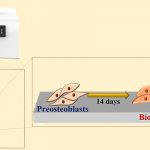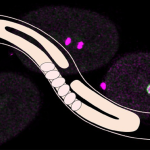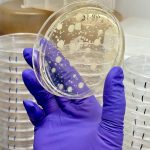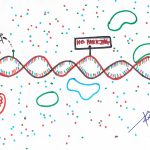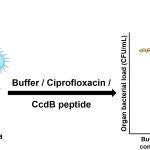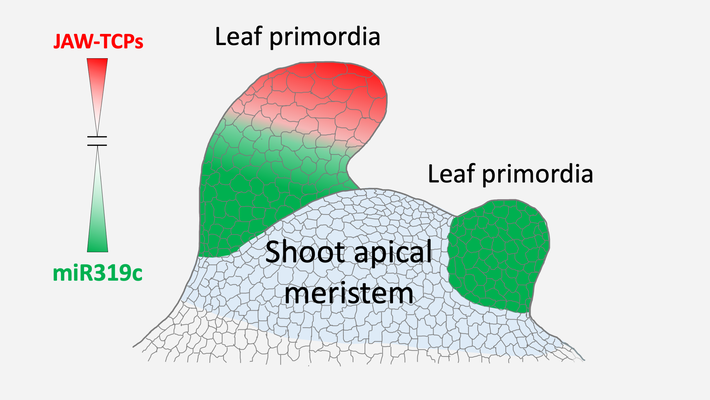
Researchers at IISc have revealed a molecular mechanism for leaf growth patterning using the model plant Arabidopsis thaliana. The work was carried out by Utpal Nath’s group at the Department of Microbiology and Cell Biology, with PhD student Naveen Shankar as the lead author.
A leaf’s journey begins as a precursor structure called the primordium, consisting of a group of cells that divide uniformly. As the leaf grows, cells towards the tip stop dividing and start maturing, while those at the base continue to divide. The establishment and maintenance of this differing growth pattern within the young leaf is crucial for its final form.
In the study, the researchers tried to answer the question of how a uniformly growing leaf primordium can be subdivided into two regions with distinct growth patterns: division and maturation. They uncovered a regulatory mechanism involving two genetic components – a small RNA and a protein that inhibit each other, acting like a seesaw.
The authors showed that the small RNA, called miR319c, is initially active throughout the leaf primordium. miR319c ensures cell division by preventing the accumulation of JAW-TCP proteins whose role is to stop cell division and promote maturation. Interestingly, as the leaf primordium grows further, JAW-TCP proteins start to accumulate towards the distal part of the primordium and reduce the level of miR319c. Due to the reduced miR319c activity, the levels of JAW-TCP proteins build up rapidly in the distal region, arresting cell division and kickstarting maturation. In contrast, persistent high miR319c activity at the base contributes to low JAW-TCP protein levels and promotes cell division. In summary, the reciprocal repression between the miR319c and JAW-TCP proteins – a double-negative feedback loop – establishes the growth pattern in a young leaf.
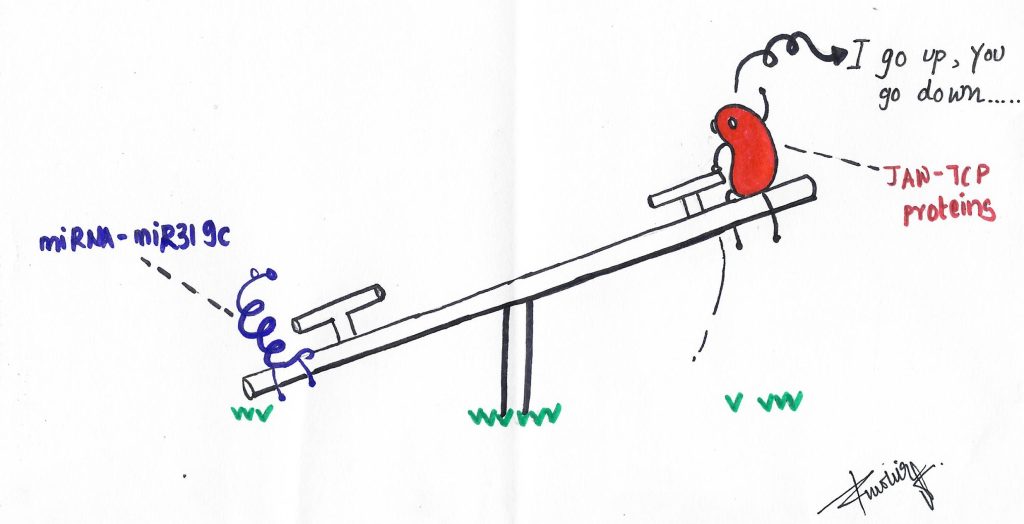
There are still several mysteries to unveil related to this molecular see-saw governing leaf growth. For example, which factors other than JAW-TCPs regulate miR319c level? What are the mechanisms that contribute to the initial accumulation of JAW-TCP proteins at the tip? Knowing the answers to these questions can further our understanding of how a simple leaf primordium grows and attains its characteristic shape and size at maturity.

